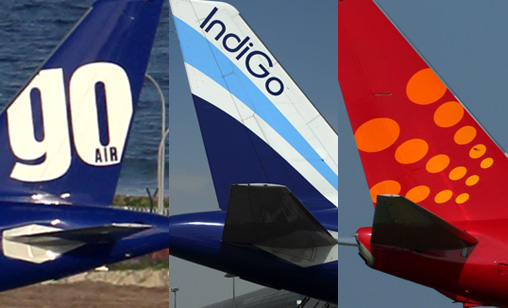News Backgrounder
COVID-19 forces India’s carriers to deepen pay cuts and contract supplier commitments
July 1st 2020
As the COVID-19 virus tightened its grip across India, the country’s airline industry metaphorically fell off the cliff and into a desert with only a half filled water bottle for sustenance. Read More »
Each investor or employee in the industry is sipping from that bottle in the hope it will not empty before rescue arrives. Refilling the bottle is not an option. Indian aviation’s survival depends on ensuring the bottle does not run dry before the coronavirus pandemic is defeated.
 |
The tightening of the financial noose on Indian aviation is happening on the back of one of commercial aviation’s most lack luster years in recent Indian history. In 2019, traffic growth slowed to single digits after decades of expansion – and then came COVID-19.
Revenues that had sagged in 2019 hit zero in April after all flights were suspended at midnight on March 23.
But many fixed costs for the industry could not be avoided. Salaries had to be paid, aircraft had to be serviced and lease payments made – although many of these commitments are in abeyance.
India’s largest private airline, LCC IndiGo, has the strongest balance sheet among its Indian peers - with a healthy cash balance including free cash. But it still has had to take to the corporate knife. It has instigated pay cuts per grade while protecting lower paid workers, replaced its Airbus ceos with neos, sought more favourable credit terms from suppliers and frozen supplementary rentals and dividend payments. The measures saved the airline more than US$450 million.
In addition, IndiGo is increasing ancillary revenue, a strategy that has been on fast forward for the last year. Ancillary revenues have climbed 30% compared with 12 months ago. But as the weeks have gone by, the LCC has had to further reduce salaries. Captains at the Delhi-headquartered airline are earning 30% less than their take home pay of past times.
Vistara and AirAsia India, both in the Tata stable, recently extended pay cuts across their businesses, but also have spared the lower grades of employees from reduced pay.
Markets are most nervous about Air India, GoAir and SpiceJet. While Air India began with only a 10 per cent cut in salaries, it is expected to sharply increase the pay cut when the realization hits home that not only is the airline broke, but the government is not much better off.
Salary reductions as steep as 50% are expected to be announced in coming weeks for these weakened operators.
On March 16, at the peak of the COVID-19 scare, Mumbai- headquartered GoAir was among the first of the country’s airlines to give everyone the jitters. It ceased all international flights, drastically reduced domestic services and asked employees to work from home. The contracts of about 70 expatriate pilots, signed as recently as August last year, were terminated. The pilots concerned have been returned to their home countries with a promise their “full and final settlement would be done in due course”.
The airline asked its local employees to take leave without pay with the goal of cutting staff by at least 35% across departments and close to 50% in support functions.
Every department has been asked to draw up a list of staffers to be relieved of their duties. In GoAir’s case, sources said the airline faced a double whammy – no business and no capable senior management to handle the crisis.
While GoAir and SpiceJet are in precarious financial health, the latter has the advantage of a committed leader at the helm of the airline, Ajay Singh. Many believe he will “not allow the carrier to go under”.
The airline has taken the lead in pushing cargo flights since the lockdown was announced and has kept employee ire at bay by softening the salary blow as far as possible.
From next month the airline has offered cockpit crew a new contract – contingent on the airline managing 26,000 hours of flying in a month – which presents logistical problems if nothing else.
Analysts are asking how the airline expected to fly as much as it proposes and how will crew and support staff keep track of the schedule.
In the meantime, the airline is delaying vendor payments, renegotiating supplier contracts and on constant look out for additional opportunities to preserve cash.
The suffering from this pandemic at India’s carriers is universal. All attention is on the proverbial water bottle.